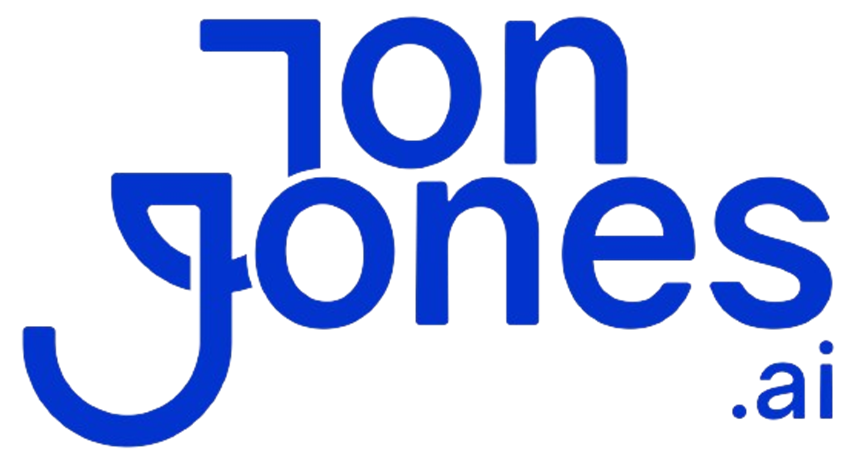Ever felt stuck, you know, with a generic AI playbook that gives you fancy charts but no clear path to profit? Yeah, that’s all too common. A real AI strategy can cut your invoice cycle time by nearly 30%, which means faster cash hitting your account and happier clients.
In this post, we’ll share five proven AI consulting solutions that turn manual chores into growth engines. You’ll see how to assess your data, pick the right tools, and track ROI (return on investment, or how much you earn compared to what you spend).
No more guessing. You’ll get step-by-step guidance to scale smarter and boost your bottom line.
AI Strategy Consulting Services, Frameworks, and ROI Analysis

Ever felt buried in manual invoice work? A digital billing insights firm did too. We teamed up for artificial intelligence (AI) strategy consulting to revamp their invoice processing.
First, we added machine learning (ML), an algorithm that learns from data. Then we layered in robotic process automation (RPA), software bots that handle repetitive tasks. Cycle times fell by almost 30%. Nice. That meant faster cash flow and happier customers.
Tracking return on investment (ROI) means measuring efficiency gains, fewer errors, and extra revenue from each project. We’ll cover picking the right vendors in Section 4. But first, let’s break down the core building blocks.
Here are seven key components:
- AI readiness and maturity assessment (checks your data quality, tech stack, and team skills)
- AI vision development (aligns ML, natural language processing, and RPA goals with your objectives)
- Data strategy design (sets rules for security, governance, and access)
- Technology selection (chooses platforms based on performance needs and budget)
- Implementation and integration support (updates workflows, trains your team, and builds data pipelines)
- Change management guidance (shapes culture, communication, and stakeholder buy-in)
- Continuous monitoring and optimization (runs performance checks, retrains models, and tweaks outcomes)
When you work with us on AI strategy, we follow a clear, step-by-step framework. First, we evaluate your current data and tech. Then we craft an AI vision tied to your goals. Next, we launch a minimum viable solution (a basic test run), scale what succeeds, and keep feedback flowing.
This structured digital transformation plan keeps you agile and drives growth. As we fine-tune each phase, you’ll see clear ROI signals guiding real-time budget decisions.
Developing an AI Roadmap and Adoption Framework

We kick off with a workshop to uncover hidden data gaps and nail down quick-win use cases. You’ll walk away with a clear view of the data fixes you need first.
In stakeholder sessions, we’ll co-create an AI vision tied to boosting revenue, delighting customers, or cutting costs. You’ll know which goals matter most and why.
Next, pilot a lean prototype on your top use case and set success metrics like model accuracy (percentage of correct predictions) or response time (how fast the system replies). It’s a test drive before you invest more.
Data Architecture, Governance, and Ethical Compliance in AI Strategy

A solid data architecture (how you organize and store data) is the backbone of any AI strategy. We map raw inputs from your CRM (Customer Relationship Management), ERP (Enterprise Resource Planning), or external feeds into a preprocessing pipeline (like sorting parts on an assembly line). Then we feed clean data into your models. Our clear schemas and scalable storage keep everything reliable, fast, and ready to audit, before insights hit your dashboard.
Next, build an AI governance framework (rules and processes that guide your AI). We like to kick off with quality audits to catch errors early. Then we define roles for data stewards and incident response so everyone knows their part.
Tracking every data point with data lineage mapping (documenting its journey). Strict access controls lock down sensitive fields. Our AI ethics guidelines run fairness tests and bias-detection routines to keep outcomes fair.
We layer in risk mitigation plans and compliance checklists for model interpretability (how you explain AI decisions/Human-in-the-loop where possible). You’ll be able to show stakeholders exactly how each recommendation popped up. Transparency = trust.
Staying on top of data privacy means regular policy reviews, vendor assessments, and model audit trails. We run hands-on workshops so your team stays up to date on new regulations. Embed these steps into your AI roadmap, and you’ll build trust, cut legal risk, and keep your systems humming.
Vendor Evaluation and AI Technology Selection

Choosing the right vendor starts with zeroing in on what you really need and then scoring each supplier on performance, support, and cost. We lay out an AI (artificial intelligence) vendor evaluation process that’s easy to follow and repeat. That way, you avoid painful mismatches and get to results faster.
Here’s what we measure:
- Scalability: how your system grows when demand spikes
- Integration: plugging into CRM (customer relationship management), ERP (enterprise resource planning), or your custom apps
- Security: the protocols that keep your data safe
- Support: response times and help channels
- Total cost of ownership: everything from licenses to upkeep fees
We use a simple scoring matrix to rank each vendor on these points, so you’re always looking at data instead of guessing.
Next, you pick where your AI lives: cloud, on-prem, or hybrid.
- Public cloud (AWS, Azure, GCP): managed services that let you spin up projects in no time
- Edge computing (processing data near your devices): for real-time insights and low latency
- DevOps (development operations) & MLOps (machine learning operations): pipelines that keep your models updating smoothly
- Hybrid orchestration: mixes cloud power with on-site control, so you can balance speed, cost, and compliance
I know sorting through service level agreements (SLAs), training packages, and upgrade paths can feel overwhelming. So we tie each offer back to your goals, whether it’s faster rollouts, tighter security, or a friendlier budget.
No guesswork. Just a clear path to the partner who’ll power your next AI win.
Implementing AI Strategy: Pilot Programs and Scaling Considerations

We merge pilot steps and scale plans into one roadmap, so you get a straight shot from testing to impact. No repeated work.
MVP planning helps you test ideas quickly. MVP stands for minimum viable product (a simple version that proves your concept). We pick a high-impact use case, set clear success metrics, and jump into fast experiments.
- Pick a high-impact use case. For example, we started in customer support and used smart automation to sort incoming tickets, cutting response times by 40% (this should be a relatively easy win).
- Define success metrics: model accuracy (how often the AI predicts correctly), response time, and your key performance indicator (KPI) gains (articulating what your business really needs is crucial).
- Run A/B tests (comparing two versions to see which wins) and host daily stand-up meetings to keep everyone aligned (where data is sufficient experiment).
Next, we scale by automating the behind-the-scenes work so your system can grow itself. We build MLOps pipelines (machine learning operations that handle retraining, testing, and deployment) and add monitoring, cost controls, and governance checkpoints so everything runs smoothly.
- Set up MLOps pipelines to handle model retraining, automated testing, and deployment without manual steps.
- Light up real-time monitoring dashboards with alert triggers that ping you when something needs attention.
- Activate cost-optimization routines that adjust compute power automatically based on demand.
- Add governance checkpoints and audit trails so you always know who did what and when.
Measuring AI Strategy Impact: ROI Metrics and KPI Definition

We start by pinning down ROI (return on investment). When you see a 20 to 30 percent boost in efficiency or a big drop in errors, decision makers jump on board. Clear ROI in dollars and hours gives everyone a common goal.
Next, we run cost-benefit modeling (an analysis that matches costs with expected gains). We factor in automation wins, fewer manual slip-ups, and extra revenue from sharper insights.
Then we test scenarios, like cutting invoice questions in half or boosting support volume, to map out real savings. These projections help us pick which pilots to scale and which ones need tweaks.
After that, we pick performance metrics to measure progress. Core metrics include:
- accuracy (percent of correct predictions)
- latency (time per response)
- utilization (how often the system runs)
- error rate (how often things glitch)
We set clear targets, like 95 percent accuracy or under one second per reply, to guide each sprint. These targets keep us honest and on track. Got it.
Finally, we build a KPI (key performance indicator) toolkit with dashboards, scorecards, and alerts. You’ll track cost per training run, mean time between failures (the gap between system hiccups), and share of tasks handled by AI. By feeding these numbers back into our cost-benefit model, we keep the ROI forecast fresh as models evolve. When we spot a worrisome trend, we retrain the model or tweak the data before costs sneak up. That constant feedback loop turns early tests into a steady growth engine.
Choosing an AI Strategy Consulting Partner: Expertise and Engagement Models

You’re not alone in this, think of us as your AI co-pilots. We’ll walk you through the tech choices, pricing options, and track record that really matters. Here’s our checklist when vetting a partner:
- Industry know-how: They’ve built AI solutions in healthcare, finance, or retail – so they know your challenges.
- Cloud credentials: Official AI certifications (proof they’ve mastered AWS, Google Cloud, or Microsoft Azure).
- Real-world wins: Third-party case studies showing clear ROI (return on investment).
- Flexible engagement: Fixed-fee, hourly, or project-based plans – pick what fits your budget and timeline.
Final Words
In the action, we explored how ai strategy consulting services guide you from assessing readiness and shaping your vision through pilots and ROI analysis.
We detailed core components like data governance, tech selection, and partner evaluation.
Then you learned planning phases, change management, and measurement with ROI metrics and KPI toolkits.
Ready for growth, you’ll tap ai strategy consulting to automate tasks, generate leads, and scale operations efficiently. Exciting progress awaits.
FAQ
What is AI strategy consulting?
AI strategy consulting provides expert advice, planning, and support to help businesses use ML, NLP, and robotics to meet goals like boosting efficiency or reducing errors by 20–30% in billing operations.
What does an AI strategist do?
An AI strategist defines an AI vision, assesses data readiness, selects technologies, designs data strategies, guides change management, and oversees implementation to align AI projects with business objectives.
What is the 10 20 70 rule in AI?
The 10 20 70 rule in AI allocates 10% of effort to strategy, 20% to data preparation, and 70% to model development and ongoing optimization to ensure reliable, high-performing AI solutions.
How do you become an AI strategy consultant?
To become an AI strategy consultant, earn a degree in a relevant field, gain hands-on experience with ML or NLP projects, complete a specialized AI consulting course, and build a strong portfolio of successful implementations.
What salary and job prospects can AI strategy consultants expect?
AI strategy consultants can expect competitive salaries ranging from $100,000 to $180,000 based on experience and location, with strong job growth driven by rising demand across industries like finance, healthcare, and manufacturing.
Who are the leading AI consulting firms?
Leading AI consulting firms include Accenture, Deloitte, and BCG, all of which offer services in AI strategy, data architecture, vendor evaluation, ethical compliance, and end-to-end implementation support.
How can small businesses use AI consulting?
Small businesses can use AI consulting to assess data quality, identify high-impact use cases like billing automation, select cost-effective technologies, train employees, and monitor performance to drive efficiency and growth.
What is an AI implementation consultant?
An AI implementation consultant focuses on deploying AI solutions, modifying workflows, training stakeholders, setting up MLOps pipelines, and ensuring smooth cultural and technical adoption across the organization.
What clients do AI strategy consultants serve?
AI strategy consultants serve clients across industries like finance, healthcare, retail, manufacturing, and tech-driven startups, helping each organization tailor AI projects to meet unique operational and strategic goals.







